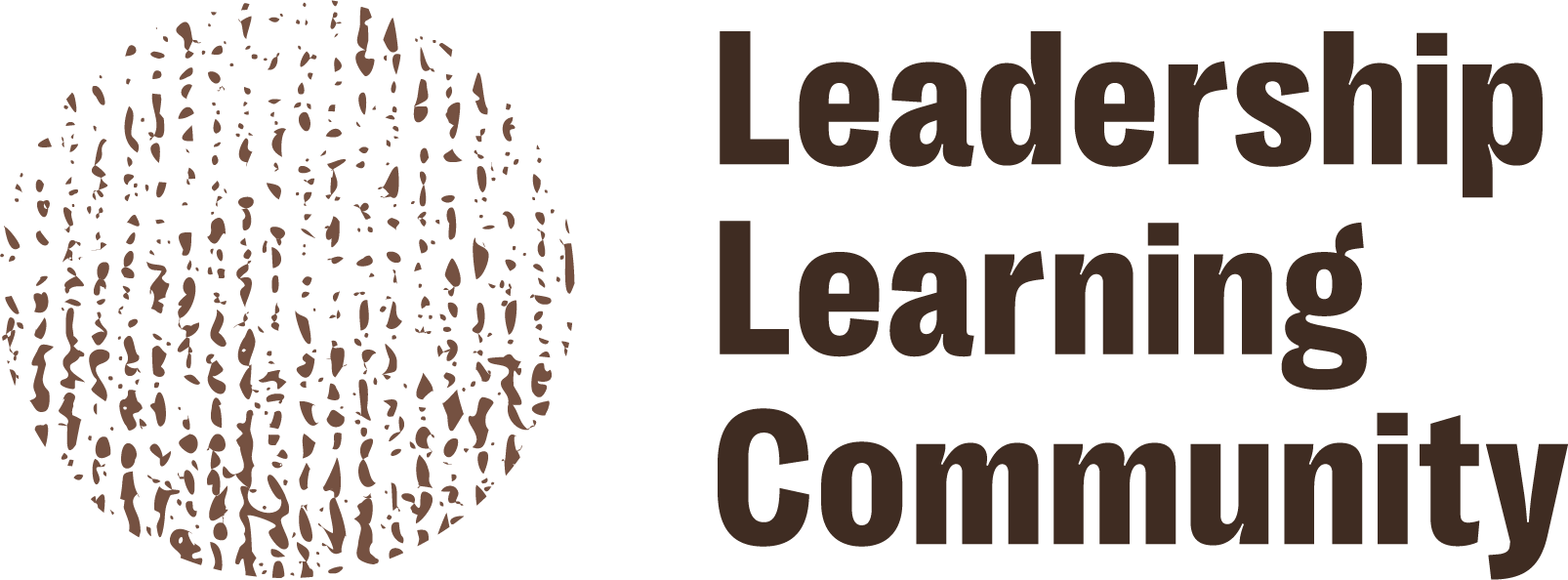Since Creating Space, I have been thinking a lot about how leadership programs often promote leadership models that reinforce the dominant culture. At Creating Space, Design Team Member, Elissa Sloan Perry, Co-Director of Management Assistance Group, shared a presentation on how white supremacist culture shows up in our organizations based on an article by Tema Okun and Kenneth Jones. We focused most of the discussion at Creating Space on organizational culture, which I later realized cannot be separated from leadership culture because, after all, most leadership programs are preparing participants to lead in an organizational context.
I strongly recommend their article. They share thirteen characteristics of white supremacist culture, all of which resonated, and for the sake of this article and beginning this discussion, I chose the following to share that I think are provocative and reveal leadership characteristics being cultivated in leadership programs that help to reinforce white supremacists culture.
Individualism:
I don’t know how many times I have heard ‘its lonely at the top’ as a way of expressing the problems of being an Executive Director. It’s a telling sentiment. Individualism which is part of the dominant culture has made its way into normative thinking about leadership. People tend to believe (and are often taught) that being a leader means being the one with the vision (answers) who can make things happen. s a result, leaders do not delegate to others because they believe their ideas and abilities are superior. His bias about exceptional individuals causes us to look for the person to credit when something important is achieved and miss that work is often accomplished by many people working together. Looking for credit and individual recognition drives competition and plays out in and across organizations. Leadership programs can bolster this distorted sense of individual importance that elevates the individual’s ideas and skills over the group’s wisdom. More leadership programs are countering this (though not enough) by emphasizing humility and listening, developing team or collaborative programs, and making the individual work of leadership more about self-reflection and ego management rather than a toolkit for managing others.
Paternalism:
Paternalism goes hand in hand with individualism. It’s part of the dominant leadership thinking that believes leaders know best and are leaders because of a natural skill or even leadership development training, without considering access to the opportunity afforded them and not others by systemic racism. Know this is a simplification, but several leadership development programs (though far fewer than there used to be) are developing leadership as a general skill set divorced from context. It’s something to consider as we professionalize the non-profit sector. In short, the key question becomes who has the best understanding of a problem that a non-profit focused on achievement gaps may be trying to address, the non-profit staff trained in organizational management or the kids, parents, teachers, and neighbors in the school. Of course, a ‘both/and’ response taps diverse resources, but sadly, the focus is usually on non-profit leaders. Some leadership programs recognizing this problem include community engagement processes as part of their leadership development activities and encouraging values of listening and humility. A more systemic question, though, would be, why are we trying to teach people to do a better job of listening to the community? Instead of figuring out how to get leadership support and resources directly to communities. Another example of this problem and the need to address this issue more systemically is that in a survey many years ago (let’s hope it has changed), leadership programs serving mid-career professionals in the non-profit sector were receiving and investing significantly more (often 10X more) than programs who were supporting grassroots leadership.
Urgency:
Talk of ‘burnout’ and ‘self-care’ are becoming conversation staples in the non-profit sector. Ken and Jones talk about the sense of urgency as a characteristic of white supremacist culture, and I found myself thinking about how urgency and burnout intersect. Leadership programs nurture the passion and commitments of people in the sector, and rightfully so, because we are all working on issues we feel deeply about. e often express this commitment by working long days and long weeks until we are utterly exhausted though we probably don’t use that word. hen the leadership intervention will probably teach us about the importance of self-care, offering some frames that help for a time until they become another thing on the long ‘to-do’ lists of the already harried activists. n the industrial age, the workforce was pressed into working faster and harder, and when people burnout’, there were others to take their place. It’s a mechanistic and oppressive view of people that serves production and has infiltrated the sector. It’s hard for us to counter when the problems we are tackling, the degradation of the planet, and the massive incarceration of young people of color, are truly urgent. Until there is little to suggest that if we work harder and do more of what we are doing, we will make more progress. Leadership programs need to become the place where we can stop, reflect and build meaningful relationships with others who can help us ask the more significant questions about what is wrong with the system and how to change it.
Perfectionism
Interestingly, in more than one presentation of the 13 characteristics of white supremacy, “perfectionism” was one of the first to receive pushback. Some described their commitment to perfectionism with pride, and others as a mandate for people of color who feel the need to outperform white colleagues to counter bias. I understood these comments as an important affirmation of the desire to perform at one’s best.
These questions sent me back for a deeper dive into the article. I think Okun and Jones are talking more about an all too familiar culture that siphons attention away from an appreciation of good efforts and achievement with a laser focus on mistakes in delivering and receiving feedback. Who hasn’t dwelled more on the minor critique than the positive acknowledgments, (yes, I admit it, I have started over a constructive criticism more than makes sense). Why? Okun and Jone point out that the dominant culture confuses doing wrong with being wrong. It’s a culture where mistakes become personal, and people feel shamed, blamed, or even punished in performance reviews.
We become good at what we do through practice and learning, yet the culture of perfectionism rewards knowing, not learning. I have heard jokes made about the “know and tell” phenomenon in leadership programs when participants feel the need to outshine each other, demonstrating their knowledge and know-how. Leadership development should become the place where if we perfect anything, it’s our capacity for humility and learning. A learning stance will be one of the greatest antidotes for learning about different worldviews and sitting with the discomfort that is part of reckoning honestly with the characteristics of white supremacist culture.
Objectivity
Perfectionism perfectly illustrates another characteristic of white supremacy culture: objectivity. The idea itself assumes an objective standard of ‘perfect.’ There is no context for perfect. To what extent is the job I do on something, e.g., a newsletter, determined by the energy, time, and funds available for a resource-strapped organization? And then there is the matter of my own cultural bias (largely unconscious) about what a perfect newsletter would look like, which more likely comes down to what perfect looks like for someone of my race, class, age, and gender (to name a few).
Most leadership programs promote norms and competencies with some confidence that there are objectively good practices. Perhaps it would be an interesting exercise to engage with participants in unpacking these standards: whose standards are they; in what context do they make sense; whose perspectives are not included, and who holds enough power to influence norms and standards?
Another way objectivity plays out is the absolute elevation of deductive rational thinking. At Creating Space, Elissa provided a framework for acknowledging and working productively with emotions such as anger, fear, sadness, and joy. (You can read more in MAG’s blog.) I was struck by the rareness and power of inviting emotion as an essential resource for bringing more ways of knowing and fuller truth to our work. In privileging linear logic, emotion is often dismissed as irrational thinking. Some leadership programs that are part of central social justice change efforts, like the Move to End Violence and the Domestic Workers Alliance, use somatics programs like Forward Stance, developed by Norma Wong, to introduce multiple ways of knowing.
Worship of the Written Word
Using a ‘newsletter’ example in our newsletter awkwardly drew my attention to another characteristic of white supremacy culture: ‘worship of the written word.’ The irony of writing about this is not lost on me, so this will be brief. We at LLC have polished our writing and even reached a point 7-8 years ago of deciding to publish our work in glossy brochures if we wanted to be taken seriously. We ‘document’ like crazy, and quite frankly, I am not sure that these efforts to capture wisdom have always proven effective in spreading learning. From personal experience, I am more likely to look at images from a meeting that evoke something more substantial about what happened than a report. In the context of supervision, documentation produces anxiety and is a poor proxy for conversation and learning.
As we lift up leadership as a relational process, it is helpful to consider when the written word is serving connection, learning, and action and when we may benefit from multiple forms of sharing and traditions. I was entirely riveted by our last webinar, simply listening to two women tell their stories. One leadership program, The Culture of Health Program, has supplemented its leadership application process with video submissions. Some leadership programs are making storytelling a part of their curriculum. I am in learning mode myself and eager for more of your stories.
I think about the question of what we value when involved in evaluating leadership development programs. Okun and Jones describe two related characteristics of the values of White Supremacy, “Progress is More, Bigger” and “Quantity over Quality.” Many people currently served by formal leadership programs are situated within non-profit organizations where more and bigger too often define success. A more prominent organization serving more people may be a poor proxy for contributing to social justice or equity. Gold standard organizations may suffer from many characteristics of white supremacy described earlier, like paternalism or individualism. By incorporating a frame of systemic racism and equity into the leadership curriculum, programs can help participants to bring a different evaluative lens, one that focuses more on whether people closest to the problems being addressed are well represented in the leadership of the organization or how power is shared within the organization as more central questions than how much money an organization has raised or how many people served. The site Racial Equity Tools is an excellent resource for bringing a race-conscious lens to leadership work.
As we challenge the individual bias in mainstream ideas about leadership and look more at how people lead and learn together, we understand that the quality of relationships is the secret sauce of how people work together to achieve common goals. In evaluating leadership programs, a focus on quantity (the number of individuals served who believe they are better leaders) can miss the real story about the quality of trust relationships that have formed among participants and a valuing of relationships that translates into the kinds of things people are accomplishing by working more successfully with others. The good news is that leadership evaluators are now asking new questions like, “How can we evaluate trust?”
The last characteristic I wanted to raise is “power hoarding‘ and how it is reinforced by, ‘defensiveness,’ ‘right to comfort’ and ‘fear of open conflict.’ As mentioned, individualism has permeated our thinking about leadership, causing us to focus on a hierarchical model of a ‘leader’ who exercises leadership over others, often believing that they, as leaders, know best. This model implies power over others rather than leading with others. Leadership programs may promote a more relational and collectivist leadership model as part of their program and yet assume they know what is best based on best practices, research, or their own experiences. While an analysis of broader understanding has value, there are also opportunities to co-create the programs with input from participants, source participants’ experience as contributors to peer learning, and draw participants into experimenting alongside staff to learn together about the most valuable supports.
The power dynamic between program staff and participants may be most noticeable when participants criticize the program and propose changes. Anyone who has facilitated meetings or programs knows the tension between trying to keep things on track and the need to pay attention to what is emerging. How leadership program staff respond to new ideas or concerns will set a tone in the program for how power operates and how conflict is used as an opportunity for learning or not. I don’t mean to make this sound easy because it can be complicated, e.g., programs may have been put in place with staff or consulting contractual commitments, a solid case may have been made for the program that has already been funded with a commitment to the fidelity of that approach. The key to managing these conflicts is transparency about challenges to incorporating feedback so that staff and participants can work in partnership to ensure the most relevant and practical support possible. Although LLC does evaluations, and I am not trying to put us or other evaluators out of work, we would love to become obsolete as leadership programs develop a more evaluative culture that activates continuous learning and openness between staff and participants.
Leadership programs, especially those doing a good job of diverse recruitment, can be microcosms of the environments in which many people lead and provide opportunities to learn how to deal openly with conflict, especially conflict around race. Leadership program staff are not necessarily equipped to facilitate constructive conversations about race. Still, the good news is that plenty of people are, and leadership programs can help finance this important work by funding experts in Diversity, Equity, and Inclusion to support their programming. We have heard stories about fractures within leadership cohorts when conflicts are not handled well, and some leadership programs that feel ill-equipped may avoid these conversations to maintain comfort and cohesion within the group.
In this case, “comfort” is only maintained for those in the cohort who are part of the dominant culture and at the expense of people of color. I have been thinking a lot about becoming more sophisticated in the ground rules we create and our expectations for learning. I have found myself thinking about our facilitation of spaces and how we have to do a little more unpacking of some of the language we use to approach our work, e.g., creating a safe space or assuming good intent. I think it goes for leadership programs as well. Safe space does not mean a ‘comfortable space,’ and ‘good intent’ does not absolve people from the impact of their behaviors but sets a stage for important learning moments. Without acknowledging our defensiveness and opening ourselves to complex conversations about race and power, we will miss the opportunity to develop leadership programming that models a different power relationship and equips participants of leadership programs to shift power and create more significant equity.
Related Posts
February 24, 2025
DEI and the Monster: Fear, Policy, and the Future of Inclusion
October 17, 2024
On the Joy of Relationship-Centered Collaboration
February 26, 2021
Reflection at the End of Black History Month 2021
February 12, 2020




